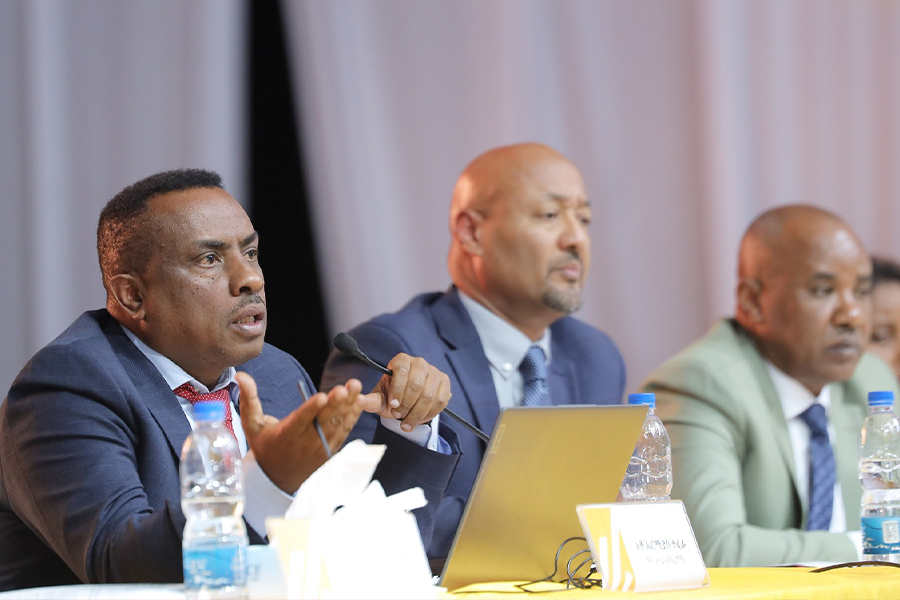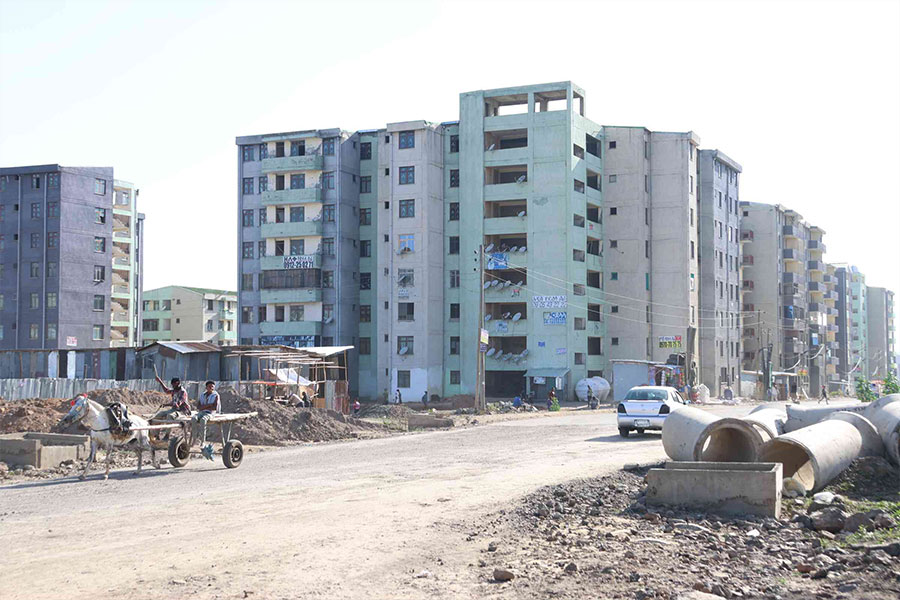
Aug 14 , 2021
By José Antonio Ocamp
One of the COVID-19 pandemic’s many complex legacies will be a high level of public-sector debt in most countries. This reflects governments’ increased spending to tackle the crisis, as well as the collapse of tax revenues as economies imploded in 2020. As a result, many lower- and middle-income countries are at risk of sovereign debt distress.
Although many developed countries are heavily indebted, their interest rates are low by historical standards – and negative in real terms. Developing countries, despite increasing their public spending less sharply during the COVID-19 crisis, must pay higher interest rates on their sovereign debt. These rates, and the risk spreads that poorer countries pay in international capital markets, may rise as interest rates in advanced economies, and the United States in particular, start to climb.
Shortly before the annual International Monetary Fund (IMF) and World Bank meetings in October 2020, the former's managing director, Kristalina Georgieva, called for urgent reforms to the international debt architecture. But action has been quite limited.
True, the G20 launched the Debt Service Suspension Initiative for low-income countries at the pandemic’s onset and extended and complemented it last November with a mechanism that allows these countries to renegotiate their debts on a case-by-case basis. But private-sector participation in this initiative has been limited, and nothing similar has been offered to middle-income countries (though some – notably Argentina and Ecuador – have been able to renegotiate their debts based on existing frameworks).
“Responding to Risks of COVID Debt Distress,” a recent report from the Friedrich Ebert Foundation New York bureau and the Consensus Building Institute, outlines the challenges facing developing countries. Drafted by a panel [including the author of this piece] comprising former senior government officials, private attorneys, and academics who have studied sovereign-debt restructurings, it contains several key messages.
Not all developing countries need to restructure their debts. In fact, one of the notable features of the current crisis has been that private capital flows to these economies returned quickly – in around two months – after a sharp initial “sudden stop” in financing in the northern spring of 2020. But the Brookings Institution’s Homi Kharas, a member of the panel, warns that the risks are high. Of the 120 developing countries he analysed, 90pc are speculative or high-risk debtors. Together, they account for more than half of all debt service due in 2021-22.
International policymakers must therefore pursue two objectives that, as the report underscores, should be mutually reinforcing. They need to promote full, equitable, and transparent private-creditor participation in debt reprofiling and restructuring when needed. And they must provide additional financial support that enables developing countries to maintain their investments in sustainable development.
The first of these objectives requires transparency of public and private sovereign debt for both creditors and debtors. In the short term, this involves sharing detailed sovereign-debt information (obviously with provisions to preserve the confidentiality of commercially sensitive information). This should include details of collateralised liabilities and the debts of state-owned enterprises and subnational governments that are backed by national governments.
The long-term solution is to create a sovereign-debt registry where detailed information can be shared between sovereign debtors and their creditors, with aggregate information being made publicly available. Equally important, developing countries’ domestic legal systems need to adopt debt-transparency standards, and creditor countries need stronger rules limiting the enforceability of debt contracts to cases where these standards are in place.
In addition, the principle of comparable treatment of creditors in debt reprofiling and restructurings must be upheld. All parties participating in these processes – with the exception of recognised preferred creditors – should publicly commit to adhere to this principle, and international financial institutions should use the means available to them to ensure that sovereign debtors and all creditors abide by it.
Financial regulators in creditor countries can offer domestic regulatory incentives for national financial institutions (bondholders, in particular) to participate in these processes, and credit-rating agencies should account for sovereign debtors’ post-restructuring outlook. Multilateral development banks (MDBs) and official creditors should consider providing credit enhancements to private creditors in the context of restructuring, when doing as such serves the public interest – for example, by encouraging private-creditor participation in debt swaps and purchases of social and green bonds.
Jurisdictions that govern sovereign-debt contracts should consider introducing measures to prevent abuse of their legal system by creditors seeking preferential recovery against sovereigns instead of participating in good-faith restructuring processes based on comparable treatment. This could help prevent a repeat of serious problems of the type that Argentina faced in New York’s courts a few years ago.
To achieve the second objective, MDBs should provide additional funding to help lower-income countries maintain key investments for sustainable development. That means MDBs need to be sufficiently capitalised – an issue that was central to the G20’s objectives in 2009 but absent during the current crisis. In turn, sovereign debtors emerging from debt distress should consider issuing state-contingent bonds (such as GDP- or commodity-price-linked bonds) and developing or expanding domestic capital markets, with support from international financial institutions.
Lastly, the panel recommends launching a dialogue on how to establish a stable sovereign-debt restructuring mechanism under multilateral auspices – either the United Nations or an independent IMF dispute-settlement mechanism. This issue has been on the global agenda for two decades. Some progress has been made in improving the collective-action clauses of debt contracts to facilitate possible renegotiations with private creditors, but the world urgently needs a specific institutional framework.
A debt-restructuring mechanism should be complemented with adequate regulation of capital flows. This issue is at the centre of the IMF’s Institutional View on capital flows, which was adopted in 2012 and is currently being revised. Similarly, credit-rating agencies should ensure that their risk evaluations are not pro-cyclical but rather capture debtors’ long-term perspective.
As the world seeks to chart an economic recovery from the COVID-19 crisis in 2021, these debt-related issues must be central to the global cooperation agenda. This report should serve as a framework for international action.
PUBLISHED ON
Aug 14,2021 [ VOL
22 , NO
1111]


Commentaries | Oct 14,2023

Commentaries | Jan 07,2024

Commentaries | Sep 28,2024

Fortune News | May 11,2025

Viewpoints | Oct 12,2024

Photo Gallery | 178038 Views | May 06,2019

Photo Gallery | 168249 Views | Apr 26,2019

Photo Gallery | 158997 Views | Oct 06,2021

My Opinion | 137042 Views | Aug 14,2021
Commentaries | Oct 25,2025

Dec 22 , 2024 . By TIZITA SHEWAFERAW
Charged with transforming colossal state-owned enterprises into modern and competitiv...

Aug 18 , 2024 . By AKSAH ITALO
Although predictable Yonas Zerihun's job in the ride-hailing service is not immune to...

Jul 28 , 2024 . By TIZITA SHEWAFERAW
Unhabitual, perhaps too many, Samuel Gebreyohannes, 38, used to occasionally enjoy a couple of beers at breakfast. However, he recently swit...

Jul 13 , 2024 . By AKSAH ITALO
Investors who rely on tractors, trucks, and field vehicles for commuting, transporting commodities, and f...

Oct 25 , 2025
The regulatory machinery is on overdrive. In only two years, no fewer than 35 new pro...

Oct 18 , 2025
The political establishment, notably the ruling party and its top brass, has become p...

Oct 11 , 2025
Ladislas Farago, a roving Associated Press (AP) correspondent, arrived in Ethiopia in...

Oct 4 , 2025
Eyob Tekalegn (PhD) had been in the Governor's chair for only weeks when, on Septembe...

Oct 25 , 2025 . By YITBAREK GETACHEW
Officials of the Addis Abeba's Education Bureau have embarked on an ambitious experim...

Oct 26 , 2025 . By YITBAREK GETACHEW
The federal government is making a landmark shift in its investment incentive regime...

Oct 27 , 2025
The National Bank of Ethiopia (NBE) is preparing to issue a directive that will funda...

Oct 26 , 2025 . By SURAFEL MULUGETA
A community of booksellers shadowing the Ethiopian National Theatre has been jolted b...